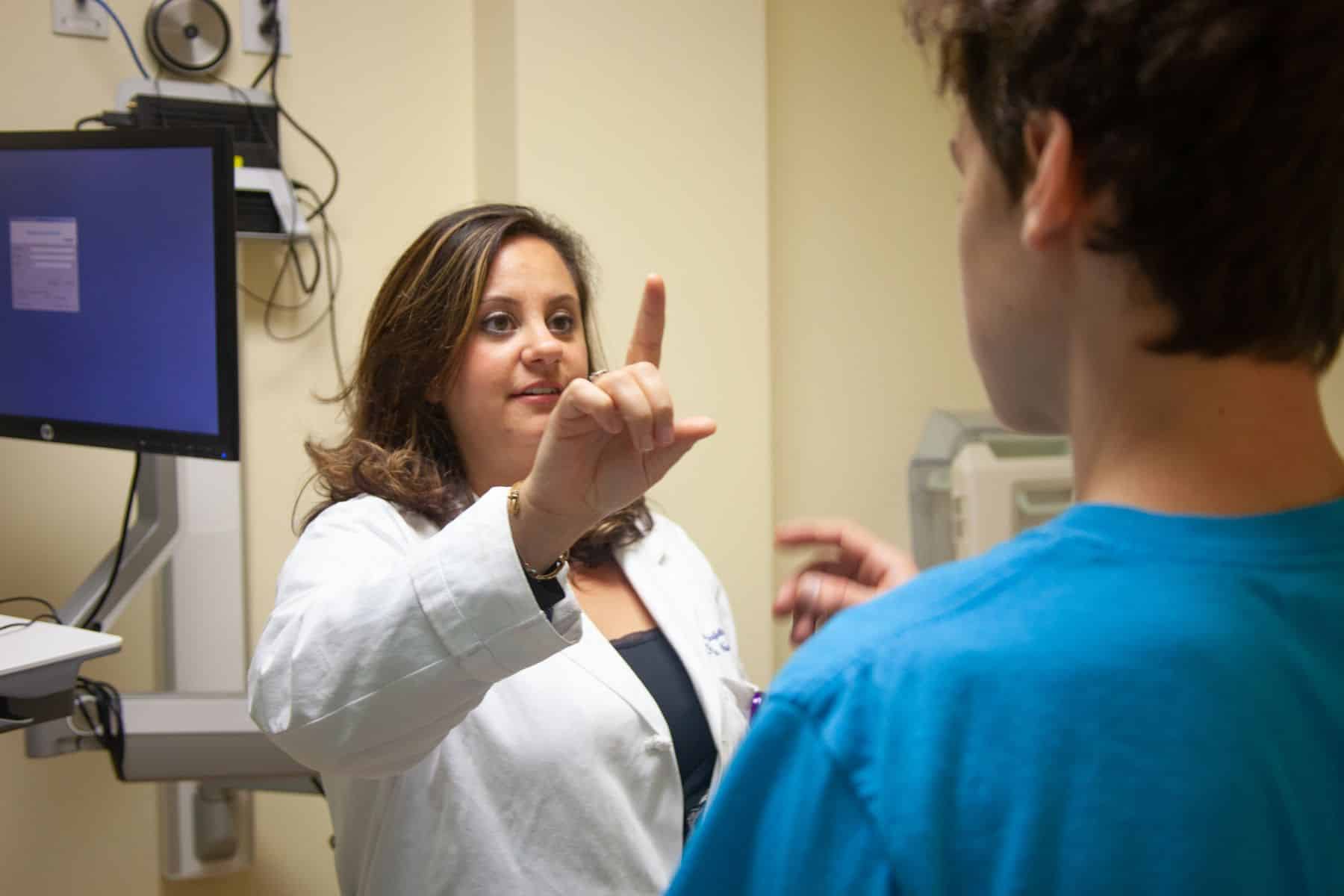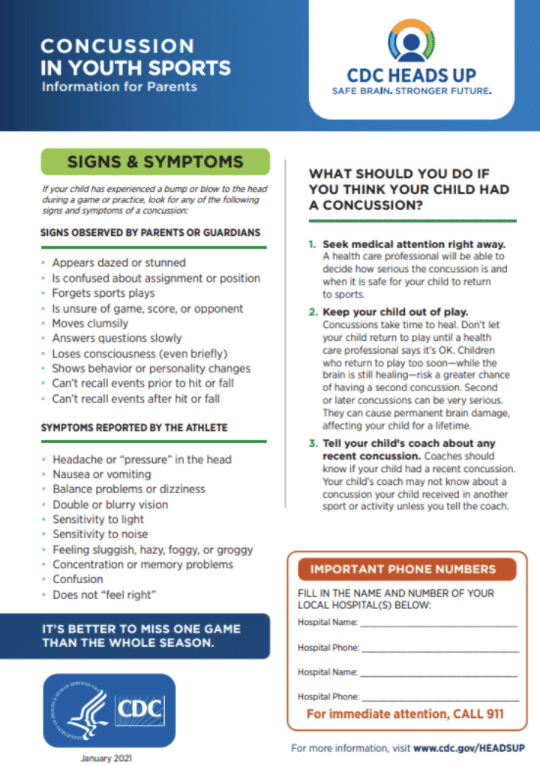
Concussions are a concern of many parents, particularly those who have children participating in contact sports. But knowing what a concussion looks like, how to treat one and how to keep kids safe can take the fear away.
Below, we asked Jeannine Rockefeller, APRN, a Yale Medicine family nurse practitioner with the pediatric neurosurgery team to answer our biggest concussion questions. As part of the Yale New Haven Children’s Hospital’s Pediatric Concussion Program, she sees patients at the Pediatric Specialty Centers in New Haven and Old Saybrook.
What are the most common youth sports where you’ll see concussions occurring?
Surprisingly, there is limited evidence on sports-related concussions in kids 5-12 years old. But most studies report American football, hockey, rugby, soccer, and boxing have the highest rate of concussion.
Can you please explain why each put kids at higher risk?
In general, where youth-to-youth contact is part of the game puts kids at higher risk of concussion. This does not mean that we don’t see concussions from other sports such as cheerleading, baseball, and volleyball. Most studies are also conducted on high school and college athletes.
How can we keep our kids as safe as possible?
The most important thing to remember for safety is “when in doubt sit it out”. If an athlete takes a hit and it is unclear based on the view from the sideline what happened, it’s best to have them sit it out and be assessed. Pulling them from the game or practice limits the risk of immediate re-injury.
Over the last 5-10 years there have been policy changes on how games are played, which have decreased the rate of concussions. An example is a policy disallowing body checking in child or adolescent ice hockey which was noted to reduce the rate of concussion in games over time. The Consensus statement on Concussion in Sport (2022) noted a reduction in concussions during ice hockey when mouthguards were utilized.
General good conditioning is also important for young athletes. Assuring athletes properly warm up and condition before games can help ensure they are in top shape for competitive play. This helps limit the risk of injury on the field.
What are some signs of a concussion?
When a child collides on the field or has a head strike or whiplash type force that results in head propulsion some things to look out for are disorientation, rubbing their eyes to clear their vision, stumbling when rising from a fallen position and being off balance, any loss of consciousness, vomiting, dizziness, stuttering and confusion.
What should you do if you suspect a concussion?
Talk to a health care provider. Patients that have altered level of consciousness or red flag symptoms should be evaluated more acutely in a local emergency room. Most concussions will resolve with conservative management within 2 weeks. Pulling a child from the sport to prevent re-injury is the first step. Resting for the first 24 hours is a good idea followed by gradual
reintegration of daily activities with return to sport as a last step.
Red flag symptoms include: one pupil larger than the other, drowsiness or inability to wake up, a headache that gets worse and does not go away, slurred speech, weakness or numbness, decreased coordination, repeated vomiting, convulsions or seizures, unusual behavior, increased confusion, restlessness or agitation, loss of consciousness.
Is it true that younger brains heal more easily?
Kids’ brains have better “neuroplasticity” than adult brains especially in the first few years of life as things are growing and changing so rapidly. This means that in general, kids recover faster from an adult with a similar injury. This is not restricted to concussion and there are absolutely outliers in both populations.
However, kids and adults have different risk profiles based on
their size, weight, physiology and exposure. Pediatric concussions are not less serious than adult concussions. Lifestyle and social/emotional factors contribute to recovery and are vastly different for adults and kids.
Anything else you’d like parents to know?
Talk to your kids about sportsmanship and how to recognize when a teammate is in trouble. Help them learn how to ask for help for themselves and a friend. Training front line observers (aka the athletes) is a great way to raise awareness and get athletes who are not feeling well out of the game which ultimately gets them back on the field sooner once recovered.
Below is a great fact sheet from the CDC for parental guidance. Additional
parental information can be found at cdc.gov/headsup

